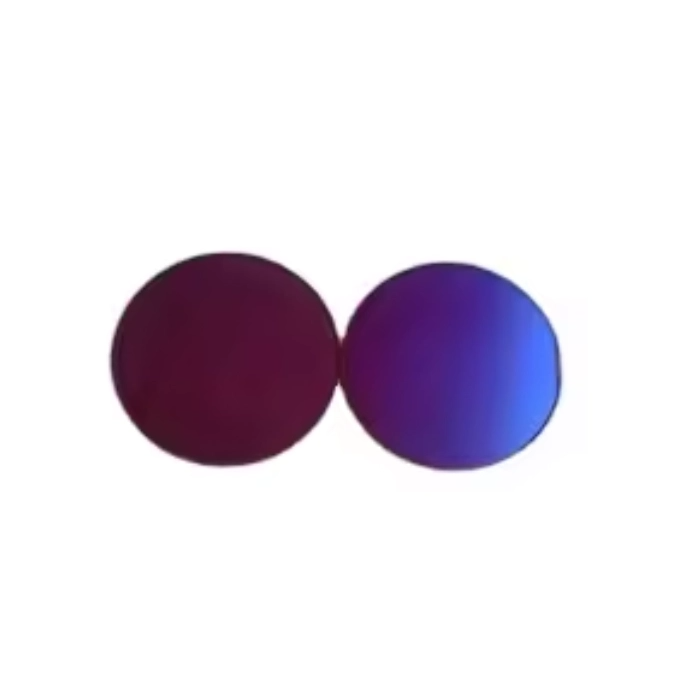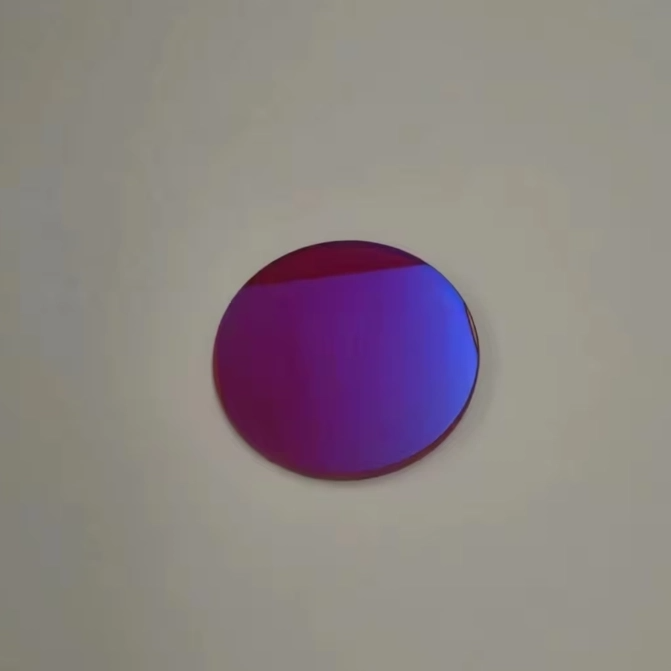Introduction
Multilayer optical coatings represent a pinnacle of advancement in modern optics. From smartphones and telescopes to advanced laser systems and biomedical imaging tools, multilayer coatings have transformed how light interacts with materials. By engineering thin layers of materials with different refractive indices, scientists and engineers can manipulate light in precise ways—enhancing reflection, increasing transmission, minimizing absorption, or even creating selective filters. This makes multilayer coatings indispensable in designing high-performance, complex optical systems.
The key to their effectiveness lies in the arrangement of individual layers—each often only a few nanometers thick. The cumulative effect of multiple interfaces causes constructive or destructive interference, shaping the light that emerges from the optical element. Such coatings are no longer limited to simple anti-reflective purposes; they are now essential in high-power laser mirrors, polarizers, beam splitters, and wavelength-specific optical filters.
Understanding how these coatings are designed and fabricated for complex optics is essential for anyone involved in the optics, photonics, or precision engineering industries.
Understanding the Fundamentals of Multilayer Optical Coatings
Multilayer optical coatings operate on the principles of interference. When light encounters a boundary between two materials with different refractive indices, part of the light is reflected and part is transmitted. By stacking multiple such boundaries—each with calculated thickness and refractive index—the cumulative interference of all reflected waves can enhance or cancel specific wavelengths of light.
The most basic multilayer coating is a Bragg reflector, which uses alternating layers of high and low refractive index materials. If each layer is a quarter-wavelength thick (λ/4), the reflections from each interface are in phase, leading to strong constructive interference and high reflectivity at that wavelength. This principle is extended in more complex designs, such as chirped mirrors, notch filters, and narrow-bandpass filters.
Key parameters to control include:
| Parameter | Description |
| Refractive Index (n) | Determines how much light bends when entering a layer |
| Thickness (d) | Controls the phase change between reflected waves |
| Number of Layers | Influences overall optical response and durability |
| Material Absorption | Must be minimized to reduce thermal effects |
These factors collectively dictate the final spectral performance of the coating. Designers often use software tools to simulate interference effects and optimize the structure for the desired application.

Design Strategies for Complex Optical Applications
Designing multilayer optical coatings for complex optics requires a deep understanding of both optical theory and the operational environment. Unlike coatings for flat glass surfaces, complex optical components such as curved lenses, waveguides, or diffractive elements present unique challenges.
Performance Requirements
Engineers begin by identifying the performance targets: spectral range, angle of incidence, polarization dependence, environmental stability, and damage thresholds. For example, laser systems often require coatings that maintain consistent reflection across a narrow band while withstanding high power levels. In contrast, imaging systems may need broadband anti-reflection coatings that operate at varying angles.
Material Selection
Materials must be selected for their optical, mechanical, and thermal properties. Common choices include:
High-index materials: TiO₂, Ta₂O₅
Low-index materials: SiO₂, MgF₂
Absorptive layers: For neutral density filters or beam attenuators
The refractive index contrast between materials impacts the sharpness of spectral features. However, too high a contrast can introduce stress, leading to cracking or delamination. Balance and stability are crucial.
Angle and Polarization Considerations
Many optical systems involve off-normal incidence or polarization-sensitive elements. Designers must consider the shift in effective optical thickness with angle and the different behavior of s- and p-polarized light. This leads to the development of coatings such as rugate filters, which use continuously varying refractive index profiles to reduce angle sensitivity.
Fabrication Techniques: From Concept to Reality
Even the most sophisticated designs are useless without precise fabrication. Thin-film deposition techniques play a critical role in turning theoretical layer stacks into physical reality. Common deposition methods include:
Physical Vapor Deposition (PVD)
PVD techniques like electron-beam evaporation and sputtering are widely used. These processes involve heating a target material until it vaporizes and condenses onto a substrate. PVD allows control over film thickness and uniformity but may require ion-assisted deposition to improve film density.
Chemical Vapor Deposition (CVD)
CVD involves chemical reactions in vapor phase to form thin films on the substrate surface. It offers high uniformity and is suitable for depositing layers on complex geometries, making it ideal for integrated photonics applications.
Atomic Layer Deposition (ALD)
ALD is a newer method that allows atom-by-atom control of film growth. It’s especially useful for conformal coatings on 3D structures and nanophotonic devices. Although slow, its precision is unmatched, ensuring uniform coatings even on nano-scale optics.

Challenges and Solutions in Multilayer Coating Fabrication
As the demand for high-precision optics grows, so do the challenges in multilayer coating fabrication. The smallest deviation in layer thickness or surface roughness can drastically alter performance. Common challenges include:
Stress and adhesion issues: Due to mismatch in thermal expansion coefficients
Environmental degradation: Moisture or UV exposure can degrade organic materials
Process reproducibility: Maintaining consistency across multiple batches or substrates
Contamination: Nanoparticles or residual gases can cause scattering or absorption
Solutions involve meticulous process control, real-time monitoring using quartz crystal microbalances or optical monitoring, and post-deposition annealing to improve film adhesion and stability.
Applications of Multilayer Optical Coatings in Advanced Optics
The versatility of multilayer coatings has led to widespread adoption across industries:
| Application | Coating Type | Function |
| Laser Mirrors | High Reflectors | >99.9% reflectivity |
| Camera Lenses | Anti-Reflective Coatings | Improve transmission |
| Astronomy | Bandpass Filters | Isolate narrow spectral lines |
| Display Panels | Dichroic Filters | Separate RGB channels |
| Biomedical Devices | Interference Filters | Target specific wavelengths for imaging or therapy |
Emerging fields like quantum computing, augmented reality (AR), and hyperspectral imaging are pushing the boundaries of what these coatings can do. For example, AR headsets require coatings that reflect only certain wavelengths while being completely transparent to others—achievable only with sophisticated multilayer structures.
Frequently Asked Questions (FAQs)
Q1: How thin is a typical multilayer optical coating?
Most layers range from 50 to 300 nanometers, depending on the target wavelength and refractive index. A complete multilayer stack can be a few microns thick.
Q2: Can coatings be applied to curved surfaces?
Yes, using techniques like ion beam sputtering or ALD, multilayer coatings can be applied uniformly to curved or irregular surfaces.
Q3: What limits the number of layers in a coating?
Mechanical stress and manufacturing complexity are the primary limits. While more layers improve spectral control, they also increase the risk of cracking or peeling.
Q4: Are multilayer coatings environmentally stable?
With proper materials and sealing, these coatings can withstand humidity, temperature fluctuations, and UV exposure for extended periods.
Q5: How are designs validated before production?
Designs are first simulated using optical modeling software (like TFCalc or OptiLayer) and validated through prototyping and spectrophotometry.
Conclusion
Multilayer optical coatings are not just accessories—they are enablers of modern optical innovation. Their ability to tailor light behavior precisely makes them indispensable in science, medicine, communications, and defense. As fabrication techniques evolve and new materials emerge, the boundaries of what’s possible will only expand. For engineers and scientists, mastering the design and production of multilayer coatings is more than a technical challenge—it’s a gateway to controlling one of nature’s most fundamental forces: light.
English
العربية
Français
Русский
Español
Português
Deutsch
italiano
日本語
한국어
Nederlands
Tiếng Việt
ไทย
Polski
Türkçe
አማርኛ
ພາສາລາວ
ភាសាខ្មែរ
Bahasa Melayu
ဗမာစာ
தமிழ்
Filipino
Bahasa Indonesia
magyar
Română
Čeština
Монгол
қазақ
Српски
हिन्दी
فارسی
Kiswahili
Slovenčina
Slovenščina
Norsk
Svenska
українська
Ελληνικά
Suomi
Հայերեն
עברית
Latine
Dansk
اردو
Shqip
বাংলা
Hrvatski
Afrikaans
Gaeilge
Eesti keel
Māori













